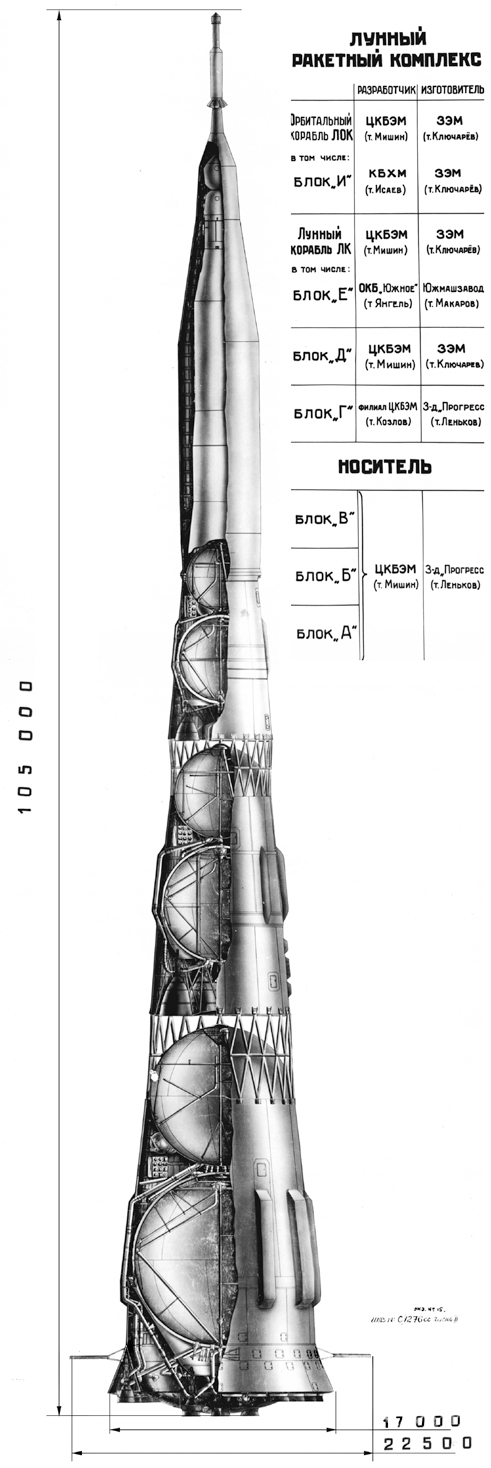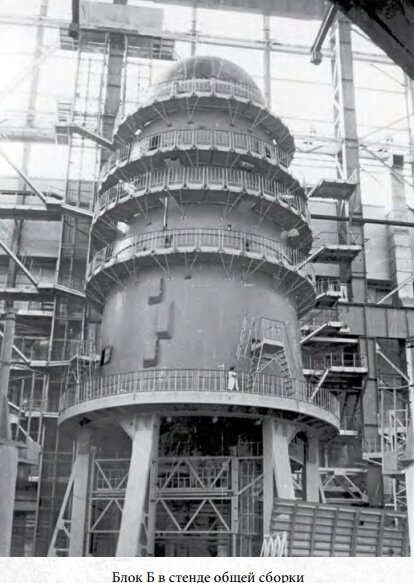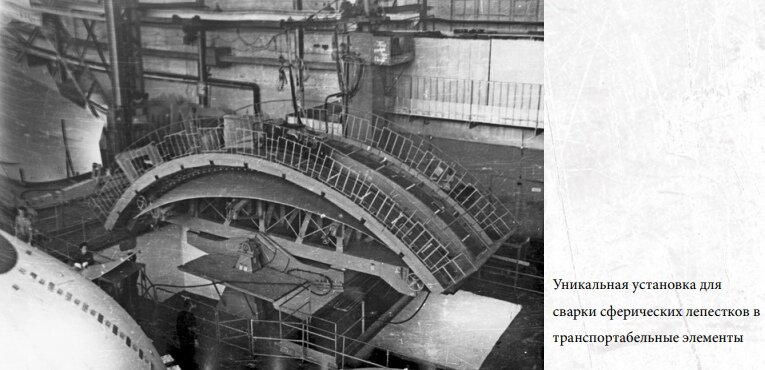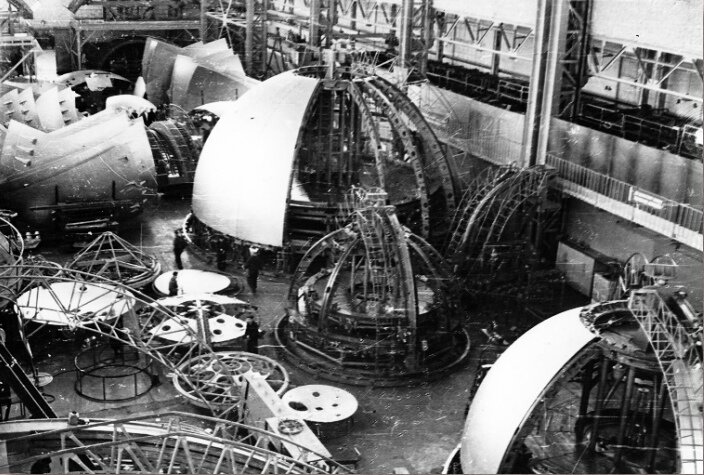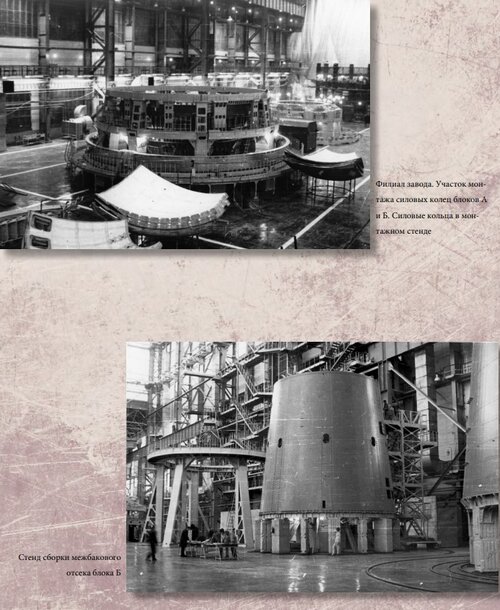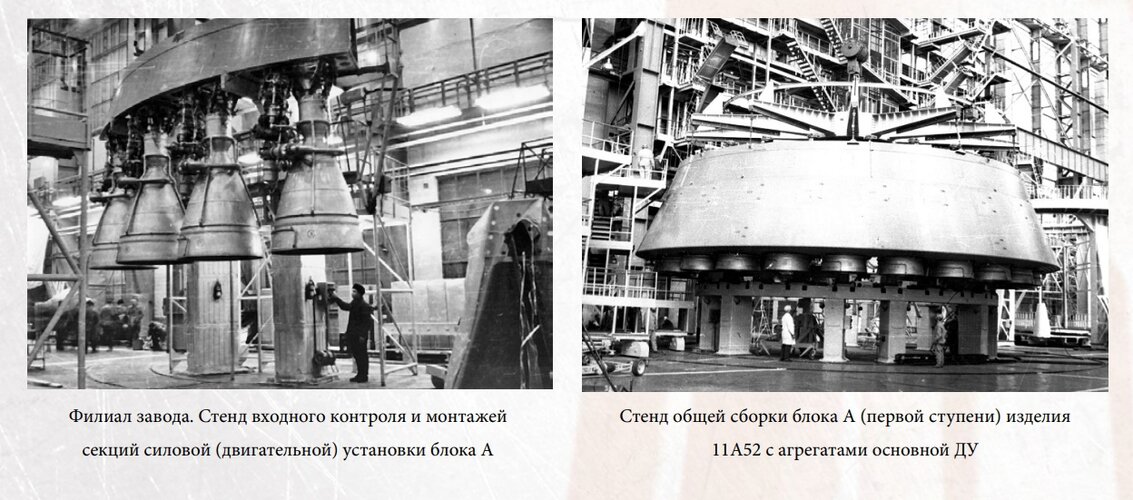You are using an out of date browser. It may not display this or other websites correctly.
You should upgrade or use an alternative browser.
You should upgrade or use an alternative browser.
Soviet N1 rocket
- Thread starter Triton
- Start date
- Joined
- 9 October 2009
- Messages
- 21,973
- Reaction score
- 13,622
FighterJock
ACCESS: Above Top Secret
- Joined
- 29 October 2007
- Messages
- 5,607
- Reaction score
- 5,933
Anyone know what caused the N-1 rockets to fail? I have read various articles that say it was the engines that did not produce enough thrust to software problems in the rockets hardware.
FighterJock
ACCESS: Above Top Secret
- Joined
- 29 October 2007
- Messages
- 5,607
- Reaction score
- 5,933
Beyond the immediate causes as described in Wikipedia:
- Early on, it was decided not to build a test stand for the first stage, as this would take too long (I've also seen a claim that a test stand would tie up too much of the USSR's concrete production, but haven't been to able to find a source for this). Instead, they planned to do a series of launches with dummy payloads. 14 tests were planned, and it was expected that a lot of these would lead to launch failures/explosions.
- The death of Korolev slowed down the program, and the new director wasn't a fan of the N-1.
- There were quality control issues (one of the failures was caused by welding slag left behind in a propellant tank).
- The engines were designed for single use, to the point where they couldn't be test-fired prior to installation in the stage. They 'solved' this by building engines in batches of 6, testing 3 of them and if they passed, installing the remaining 3. A follow-on design that fixed this was scheduled for the 5th launch, IIRC.
- Early on, it was decided not to build a test stand for the first stage, as this would take too long (I've also seen a claim that a test stand would tie up too much of the USSR's concrete production, but haven't been to able to find a source for this). Instead, they planned to do a series of launches with dummy payloads. 14 tests were planned, and it was expected that a lot of these would lead to launch failures/explosions.
- The death of Korolev slowed down the program, and the new director wasn't a fan of the N-1.
- There were quality control issues (one of the failures was caused by welding slag left behind in a propellant tank).
- The engines were designed for single use, to the point where they couldn't be test-fired prior to installation in the stage. They 'solved' this by building engines in batches of 6, testing 3 of them and if they passed, installing the remaining 3. A follow-on design that fixed this was scheduled for the 5th launch, IIRC.
- Joined
- 1 April 2006
- Messages
- 11,394
- Reaction score
- 10,279

"Rockets and People, Volume 4: The Moon Race"
In the last volume of this series, the Russian spacecraft designer Boris Chertok continues his narrative on the history of the Soviet space program.
- Joined
- 9 October 2009
- Messages
- 21,973
- Reaction score
- 13,622
With regards as to the L3 Lunar Expedition, as well as the follow on L3M plans:
L3 - Russian manned lunar expedition. Development begun in 1964. All hardware was test flown, but program cancelled in 1974 due to repeated failures of the project's N1 launch vehicle. Status: Cancelled 1974. Gross mass: 95,000 kg (209,000 lb).
L3M - Russian manned lunar base. Study 1970-1972. Follow-on to the L3, a two N1-launch manned lunar expedition designed and developed in the Soviet Union between 1969 and 1974. Status: Study 1970.
Last edited:
- Joined
- 21 January 2015
- Messages
- 12,150
- Reaction score
- 16,351
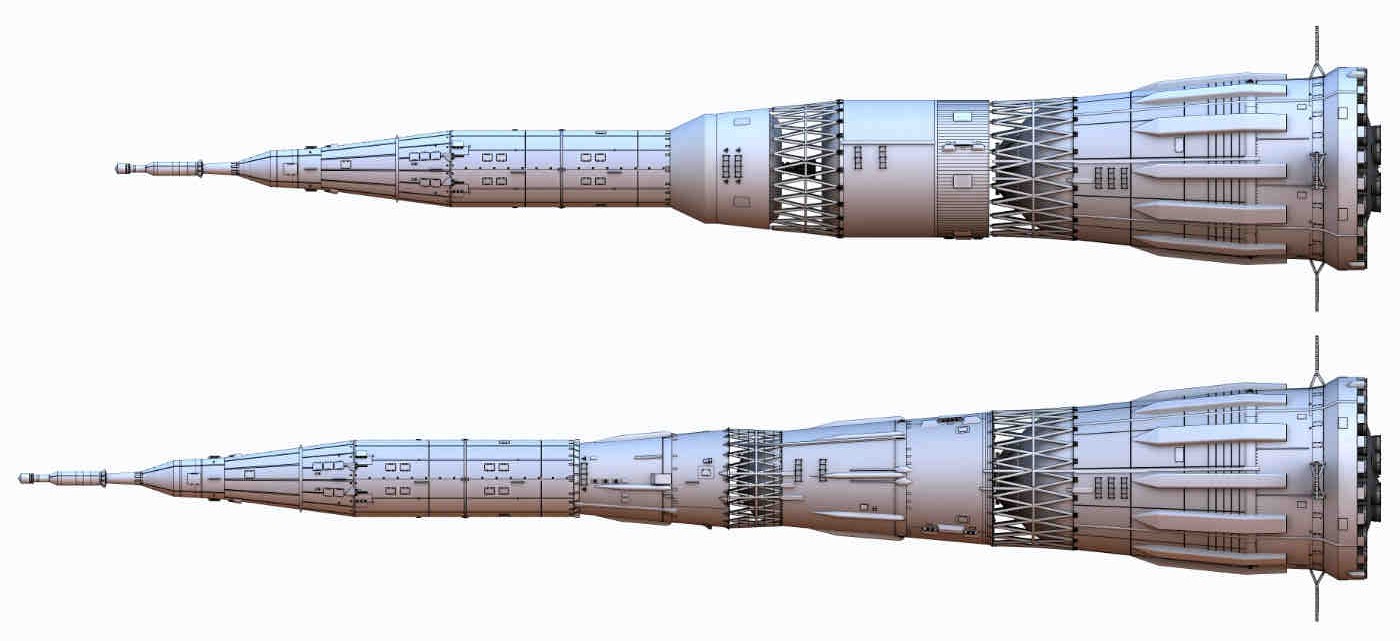
N-1 For the Moon & Mars, a second edition. - Nick Stevens Graphics
I’m pleased to announce that we are going ahead with a second edition of the book, “N-1 for the Moon and Mars”. If you would like to be kept informed of progress, I have set up a newsletter that will report details, and share some early views of new content. You can sign up here: … Continue...
 nick-stevens.com
nick-stevens.com
View: https://twitter.com/nick_stevens_gr/status/1322856728074092547
A video I did of the Soviet N1-3L at the launch tower, for the first edition of the book "N1 for the Moon and Mars"
View: https://twitter.com/nick_stevens_gr/status/1322862746992562177
The second edition is well underway, with a LOT more information, and many new high quality photographs.
It will be extending to cover competing Soviet Moon rockets, and alternate lander designs.
View: https://twitter.com/nick_stevens_gr/status/1322868092280688641
The current very rough estimate is that we will have it written and ready for the Kickstarter about the end of March.
With regards as to the L3 Lunar Expedition, as well as the follow on L3M plans:
L3 - Russian manned lunar expedition. Development begun in 1964. All hardware was test flown, but program cancelled in 1974 due to repeated failures of the project's N1 launch vehicle. Status: Cancelled 1974. Gross mass: 95,000 kg (209,000 lb).
L3M - Russian manned lunar base. Study 1970-1972. Follow-on to the L3, a two N1-launch manned lunar expedition designed and developed in the Soviet Union between 1969 and 1974. Status: Study 1970.
The Soviets surely had a shitload of lunar programs running in parallel ! No surprise they ran out of money pretty fast.
- E-8 robotic orbiters
- E-8 robotic sample scoopers
- E-8 robotic lunokhods
- L-1 manned lunar flyby ship
- LOK-L3 "official" manned lunar program
- UR-700 / LK-700 / RD-270 "backup" plan (there was a decree + some tests)
- L3M : Mishin improved lunar plan post 1970.
And by the year 1969 all of them collided together like a train wreck.
-the RD-270 was running on the bench
- Mishin started working on the L3M
- The N-1 launched twice and exploded twice
- The very unreliable Proton was overburdened with... everything else: all three Ye-8s plus the agonizing L-1, plus Mars and Venus probes.
Baikonur was a pretty dangerous place: between two huge N-1 explosions a Proton poisoned its launch complex with storable propellants - after exploding uncomfortably close from the ground...
Last edited:
- Joined
- 13 August 2007
- Messages
- 8,445
- Reaction score
- 10,999
Not only that, they fight under each other like Cats and Dogs, see Chelomei vs MishinThe Soviets surely had a shitload of lunar programs running in parallel ! No surprise they ran out of money pretty fast.
Next to problem of Mishin way of "we need 12 N1 flights to test the Rocket", was not helpful.
Also that politburo not care and budget low was also hell of a problem...
...oh members of politburo ran for there life as that Proton try to return to it's launch pad !
And they ran fast, because it rained N2O4 and N2H4 - storables maybe, but toxic and corrosive like crazy, for sure. To think they wanted fluorine, at some point... they would have ran even faster. Or just dropped into ashes, Wile E. Coyote style.
- Joined
- 27 May 2008
- Messages
- 1,178
- Reaction score
- 2,483
The use of fluorine as a rocket fuel;-
“If, however, this coat is melted or scrubbed off, and has no chance to reform, the operator is confronted with the problem of coping with a metal-fluorine fire. For dealing with this situation, I have always recommended a good pair of running shoes.”
Ignition by John Clarke
“If, however, this coat is melted or scrubbed off, and has no chance to reform, the operator is confronted with the problem of coping with a metal-fluorine fire. For dealing with this situation, I have always recommended a good pair of running shoes.”
Ignition by John Clarke
- Joined
- 13 August 2007
- Messages
- 8,445
- Reaction score
- 10,999
Chelomei was looking into option for High Energy fourth stage on ProtonThe use of fluorine as a rocket fuel;-
guess what, it's engine use Fluorine as oxidizer !
Can't recall the mix that Glushko wanted to use but while the oxidizer made some sense (H2O2) the fuel he chose was (IIRC) some exotic boron thing that was not only deadly toxic as it was but the exhaust was highly corrosive as well. And I think everyone at some point did some work with fluorine... That they actually built a test site and did some testing ... Then again... I mean a nuclear propelled ICBM, the Orion drive, you can't fault the imagination.
Randy
Randy
What really surprised me was Lockheed FDL-5A's Rocketdyne AMPS-1 aerospike engine... that was build and tested with fluorine.
I suppose the Air Force badly needed the +50 seconds of isp (460 > 510) to take such risks.
Either to get closer from a SSTO or have better payload to orbit.
But on a piloted rocketplane with drop tanks on the wing leading edges...??!! gasp.
I suppose the Air Force badly needed the +50 seconds of isp (460 > 510) to take such risks.
Either to get closer from a SSTO or have better payload to orbit.
But on a piloted rocketplane with drop tanks on the wing leading edges...??!! gasp.
- Joined
- 27 May 2008
- Messages
- 1,178
- Reaction score
- 2,483
John Clarke (from Ignition) suggests FLOx was the favourite way forward for using Florine as a propellant. This is a mixture of liquid fluorine and liquid oxygen. The introduction of oxygen into the mix stabilises the Florine, changing its handling from “Deeply troubling” to “Deeply challenging ”.
- Joined
- 27 September 2006
- Messages
- 6,417
- Reaction score
- 6,816
The failure of the N1 is in marked contrast to the success of the Soyuz, which has become the most used manned system.
Rather like the Titan and Gemini, Soyuz could have been an alternative, if risky, way to the Moon.
Saturn vs N1 shows the advantage not just of Von Braun's absolute authority but the lavish amounts of money and industrial resource available to the USA. If it looks right it is. The relatively simple and effective modular approach of the Saturn V compared with the crazy piping and numerous nozzles of the N1, which looks like the plumbing system in the old film.The Mouse on the Moon.
Rather like the Titan and Gemini, Soyuz could have been an alternative, if risky, way to the Moon.
Saturn vs N1 shows the advantage not just of Von Braun's absolute authority but the lavish amounts of money and industrial resource available to the USA. If it looks right it is. The relatively simple and effective modular approach of the Saturn V compared with the crazy piping and numerous nozzles of the N1, which looks like the plumbing system in the old film.The Mouse on the Moon.
- Joined
- 13 August 2007
- Messages
- 8,445
- Reaction score
- 10,999
It's Pentaborane with N2O4 for UR-700Can't recall the mix that Glushko wanted to use but while the oxidizer made some sense (H2O2) the fuel he chose was (IIRC) some exotic boron thing that was not only deadly toxic as it was but the exhaust was highly corrosive as well.
it would have increased specific impulse of the RD-270M engine by 42 seconds
i hear that Glushko worked also on engine that burn 30% Beryllium / 70% Hydrazine+Pentaborane mixture.
Against that, the Proton H4 stage with Fluorine /Ammonia sound suddenly healthful !
It had nothing to do with Von Braun's "absolute authority", which never existed. Von Braun did not design the Saturn V. His organization did (Koelle). It was another center (Silverstein) that told him to use hydrogen in the upperstages. Also, all up testing was a Headquarters mandate (Mueller).The failure of the N1 is in marked contrast to the success of the Soyuz, which has become the most used manned system.
Rather like the Titan and Gemini, Soyuz could have been an alternative, if risky, way to the Moon.
Saturn vs N1 shows the advantage not just of Von Braun's absolute authority but the lavish amounts of money and industrial resource available to the USA.
Also, it wasn't the "lavish amounts of money and industrial resource", it was just doing ground tests.
- Joined
- 13 August 2007
- Messages
- 8,445
- Reaction score
- 10,999
Had Von Braun his wayIt had nothing to do with Von Braun's "absolute authority", which never existed. Von Braun did not design the Saturn V. His organization did (Koelle). It was another center (Silverstein) that told him to use hydrogen in the upperstages. Also, all up testing was a Headquarters mandate (Mueller).
the Saturn V would be all Kerolox in all Stages and conduct around 12 test flights like Saturn I
4 flight First stage, 4 flights with First and second, 4 flights all Stages
Mueller say on that: NO WAY and after SA-501 & 502 was Saturn V qualified for manned flight
odd Mishin wanted also 12 test flights with N1
This question burn for years in my mind...
Has Mishin redesign of N1 doomed the Rocket ?
He went for super cooled Lox, dit he order change on Lox feedline to withstand that stress under those temperature ?
archipeppe
ACCESS: Top Secret
- Joined
- 18 October 2007
- Messages
- 2,431
- Reaction score
- 3,152
Has Mishin redesign of N1 doomed the Rocket ?
He went for super cooled Lox, dit he order change on Lox feedline to withstand that stress under those temperature ?
Mishin proposed the modification to add 6 more engine in the central aerospike dome.
It had nothing to do with Von Braun's "absolute authority", which never existed. Von Braun did not design the Saturn V. His organization did (Koelle). It was another center (Silverstein) that told him to use hydrogen in the upperstages. Also, all up testing was a Headquarters mandate (Mueller).The failure of the N1 is in marked contrast to the success of the Soyuz, which has become the most used manned system.
Rather like the Titan and Gemini, Soyuz could have been an alternative, if risky, way to the Moon.
Saturn vs N1 shows the advantage not just of Von Braun's absolute authority but the lavish amounts of money and industrial resource available to the USA.
Also, it wasn't the "lavish amounts of money and industrial resource", it was just doing ground tests.
Ground tests of the first stage were not carried out due to time pressure (it'd take too long to build the test stand), money was also a factor (the concrete required for such a test stand would disrupt other parts of the Soviet economy too much). So yes, (lack of) lavish amounts of money and industrial resources played a role. Official waffling was also a factor (they spent several years dithering over the N-1, by the time the decision was taken time pressure ruled out first stage tests).
If only they had picked the N-11 in place of Proton, back in 1962-63...
- Every time a N-11 flew, they would have tested the N-1, minus the rotten tricky first stage.
- They would have had mostly identical rockets for Zond and Soyuz LOK
- Proton could launch a Zond only into a lunar flyby; the more powerful N-11 could have send it into lunar orbit, Apollo 8 style. No need for N-1 there.
- bonus: no toxic contamination each time the rocket drove itself into the solid ground (or steppe).
Well ideally, they would have flown the N-11 first, repeatedly and reliably - then asked Glushko for a RD-270 powered first stage to go below it as a superbooster.
Although that would have probably caused plenty of different issues, obviously.
- Every time a N-11 flew, they would have tested the N-1, minus the rotten tricky first stage.
- They would have had mostly identical rockets for Zond and Soyuz LOK
- Proton could launch a Zond only into a lunar flyby; the more powerful N-11 could have send it into lunar orbit, Apollo 8 style. No need for N-1 there.
- bonus: no toxic contamination each time the rocket drove itself into the solid ground (or steppe).
Well ideally, they would have flown the N-11 first, repeatedly and reliably - then asked Glushko for a RD-270 powered first stage to go below it as a superbooster.
Although that would have probably caused plenty of different issues, obviously.
archipeppe
ACCESS: Top Secret
- Joined
- 18 October 2007
- Messages
- 2,431
- Reaction score
- 3,152
My dear Archibald, said that it is necessary to underline that all wasn't only Mishin to blame for such fault.Has Mishin redesign of N1 doomed the Rocket ?
He went for super cooled Lox, dit he order change on Lox feedline to withstand that stress under those temperature ?
Mishin proposed the modification to add 6 more engine in the central aerospike dome.
By one side the LOK/LK complex inceased its mass from time to time, on the other side the growth rate of the NK-15 engines was fairly poor.
- Joined
- 13 August 2007
- Messages
- 8,445
- Reaction score
- 10,999
That too, what produce hell of problems during Test launches as they produce during flight and shutdown massive POGOMishin proposed the modification to add 6 more engine in the central aerospike dome.
but biggest change Mishin made was to lower the LOX temperature from -199°C down to −202 °C
i wonder if Lox feed line got too brittle under those temperature...
Those feed lines make sharp bents into NK-15 engines Turbopumps what also can let to issue under POGO
Also hat the NK15 engines serious issues, from Quality, inspection.
- Joined
- 26 September 2008
- Messages
- 1,960
- Reaction score
- 746
Ground tests of the first stage were not carried out due to time pressure (it'd take too long to build the test stand), money was also a factor (the concrete required for such a test stand would disrupt other parts of the Soviet economy too much). So yes, (lack of) lavish amounts of money and industrial resources played a role. Official waffling was also a factor (they spent several years dithering over the N-1, by the time the decision was taken time pressure ruled out first stage tests).
It had nothing to do with Von Braun's "absolute authority", which never existed. Von Braun did not design the Saturn V. His organization did (Koelle). It was another center (Silverstein) that told him to use hydrogen in the upperstages. Also, all up testing was a Headquarters mandate (Mueller).The failure of the N1 is in marked contrast to the success of the Soyuz, which has become the most used manned system.
Rather like the Titan and Gemini, Soyuz could have been an alternative, if risky, way to the Moon.
Saturn vs N1 shows the advantage not just of Von Braun's absolute authority but the lavish amounts of money and industrial resource available to the USA.
Also, it wasn't the "lavish amounts of money and industrial resource", it was just doing ground tests.
Ground tests of the first stage were not carried out due to time pressure (it'd take too long to build the test stand), money was also a factor (the concrete required for such a test stand would disrupt other parts of the Soviet economy too much). So yes, (lack of) lavish amounts of money and industrial resources played a role. Official waffling was also a factor (they spent several years dithering over the N-1, by the time the decision was taken time pressure ruled out first stage tests).
I think there were a bunch of factors, many of them interconnected:
-late start (they did not think that Apollo was a real program until several years after it started)
-lack of resources
-poor management
-infighting
Some of those things are interrelated. For instance, the infighting meant that they didn't get the resources they needed. If there had been a stronger consensus, there would have been more resources. There was also a bit of self-delusion involved. Even in 1967 and 1968 they thought that they could beat the Americans, but that required the Americans to stumble badly.
To use a race analogy, they didn't start running until long after the starting gun fired, and they were out of shape. So while technically they were racing the Americans to the Moon, they were not doing a good job of it.
- Joined
- 9 October 2009
- Messages
- 21,973
- Reaction score
- 13,622
I've found one good reason the N-11 could have replaced the Proton: Ye-8-5 sample return.
Look at a their landing area: a small corner of the Moon south of the Sea of tranquility. ALL OF THEM but NOT the Lunokhods.
The reason ? Proton wasn't powerful enough. Adding to the sample return canister a mid-course correction engine and its prop tanks would have the probe busting Proton payload.
So a genius trajectory wizzard and colleague of Keldysh come with a smart idea.
The Ye-8-5 canister should target USSR straight out of the Moon surface. No trajectory maneuver when returning.
There was a huge price to pay however: this could be done only from a small corner of the near side.
Guess why Luna 15 pestered Apollo 11 ? or why did Luna 24 landed only miles from the toppled Luna 23 ? same place: south of Tranquility.
ALL the sample scoopers went there.
As for Lunokhods they had nothing to return to USSR so they were free from that constraint !
Now had the N-11 been more powerful than Proton... could have solved that issue.
Give Ye-8-5 more mass margin and their returning canister can get a mid course correction engine.
Look at a their landing area: a small corner of the Moon south of the Sea of tranquility. ALL OF THEM but NOT the Lunokhods.
The reason ? Proton wasn't powerful enough. Adding to the sample return canister a mid-course correction engine and its prop tanks would have the probe busting Proton payload.
So a genius trajectory wizzard and colleague of Keldysh come with a smart idea.
The Ye-8-5 canister should target USSR straight out of the Moon surface. No trajectory maneuver when returning.
There was a huge price to pay however: this could be done only from a small corner of the near side.
Guess why Luna 15 pestered Apollo 11 ? or why did Luna 24 landed only miles from the toppled Luna 23 ? same place: south of Tranquility.
ALL the sample scoopers went there.
As for Lunokhods they had nothing to return to USSR so they were free from that constraint !
Now had the N-11 been more powerful than Proton... could have solved that issue.
Give Ye-8-5 more mass margin and their returning canister can get a mid course correction engine.
- Joined
- 13 August 2007
- Messages
- 8,445
- Reaction score
- 10,999
Nice info graphic on N1
source:
View: https://twitter.com/HomemDoEspacoBr/status/1424068726081654793
source:
View: https://twitter.com/HomemDoEspacoBr/status/1424068726081654793

